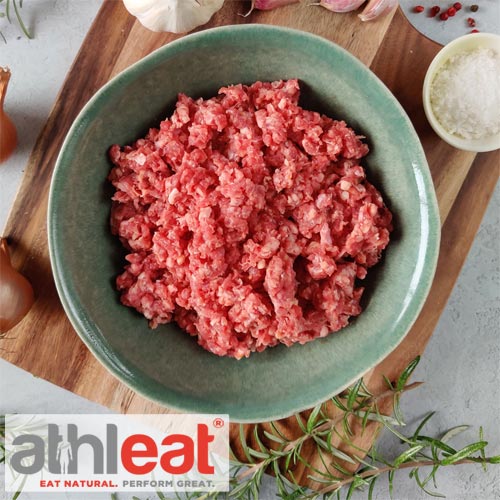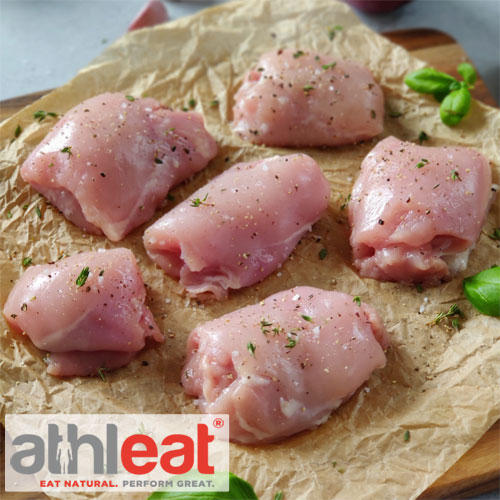The squat is a great exercise, so we are going to look at it in its various forms.
How you perform them properly, why everyone should be doing them, and what happens when you do.
“If you squat you will get big legs” – what a great quote… how very wrong too. Similar lines are used for many of the really important exercises, deadlifts included. People who use these disparaging comments can be uneducated in the dark arts of true fitness, and it’s not usually their fault.
Adverts, blogs, television and all the other bad media contribute to the aversion of “proper” exercises…
Slendertone, abmaster 2000, seven minute abs (& six minute abs) and many other quick fixes are poisonous and rubbish. As are the use of words like tone, low fat and whole grain – in the end, it all comes down to good information (again), so consult a good professional and read good publications. We do all the time – it’s how you learn to sift through the rubbish and find the good stuff.

What is a squat? Why should I be doing it? What will it do for me? Are there any variations?
Essentially, to perform a squat, initiate the movement starting from standing, then lower yourself towards the ground by bending your knees so that they are at or below 90 degrees, then back up again… primary school stuff, right?
But you would be shocked by the number of people that are unaware of the exercise, and how to perform it properly.
The right technique is the key to this movement’s effectiveness, as with just about every exercise you have ever performed.
There are many variations of the squat, from “air” squats, back squats, front squats, single leg squats, hack squats, jump squats, sumo squat, overhead squats, overhead single leg squats, goblet squats and the list goes on and on.
All of these variants mean that there is a perfect exercise for you in there somewhere, whether you are training for a 100m sprint event, or want your ass to look good in a pair of tight jeans… you need to be squatting, no excuses, just squatting.
Along with bodyweight chins and the deadlift, you have got all the bases covered with these three exercises. And really that is all you need to progress.
In most gyms, the squat rack is either being used by someone doing upright rows, or sitting there gathering dust whilst the preacher curl bench and the sit-up mats are being worn thin with overuse.
And the smith machine is still there being used by a half-wit attempting PBs for his bench press, and failing horribly.
The first thing to consider before following all the great tips that our experts have penned for us below is your footwear!
After all, it is the only thing connecting you with the ground, now we are not asking everyone out there to purchase a pair of lifting shoes (although that would be advantageous) but try and find a pair of trainers that are not pumped up with air, bubbles, gel, or any other substance that make your stance unbalanced.
Now, unbalanced can be good at times with the right exercise, but heavy squats and deadlifts are not the time to be wobbling about like you are standing on a water bed, when you need to be firmly planted to terra firma with double your bodyweight hanging from your arms or sitting on your back.
This exercise can be seriously dangerous in the wrong hands (or feet).The second thing to consider is finding yourself a good spotter/training partner, who can ensure your safety, but also give you pointers and motivation!
 If you can’t find a decent spotter, always ensure you have safety pins in place.
If you can’t find a decent spotter, always ensure you have safety pins in place.
You are always told, when lifting heavy things from the ground to “lift with your legs” but in actuality every muscle works when you Squat: your legs move the weight, your abs & lower back stabilize it, your arms squeeze the bar, etc.
The Squat is NOT just a leg exercise, it’s a full body exercise with a particular emphasis on your back, hamstrings and glutes (or the posterior chain if you want the posh words!) And an important one at that.
To get better at any exercise there are three things you can do to improve it – do it well, do it more and do it with more intensity
So, first up is the “do it well”.
There are a few common factors that are going to affect your squat in one way or another, so get to know your own body (or get a professional to help you out) and realise the things that you are not so good at, and get better at them. Below are some of the most common things that need to be addressed:
Flexibility – Muscle Imbalance – Core Strength – Joint Mobility
Do you have one or more of these issues? Soft tissue work from a good massage professional (no, not that type…), using a foam roller on a regular basis and a certain amount of “rehab/prehab” will ensure that you are the best possible condition to squat. So, video yourself to check your form, compare it with your mates, are you favouring one side? Going onto your toes? Are your knees buckling in? Then you will have some inefficiency in your bio-mechanics, with tight hip flexors/adductors/abductors/glutes/lower back/hamstrings.
If so, sort them out, but that doesn’t mean don’t squat!
The problems above are sometimes already there, you just didn’t know about them. Your “body awareness” was not finely tuned enough to realise you had a problem. A good squat on a regular basis will actually improve your issues. It is a complex exercise to do well, and lift heavy, but don’t get put off by these “problem” areas, they can all be worked on so that your squat technique becomes acceptable.
So, how do you start squatting, and how can you start to add this exercise to your routine?
As Andy MacKenzie of Ironmac Fitness and the Training Lab suggests, even if you are an experienced lifter you need to “groove the move”, get a bar, stick it on your shoulders and get squatting.
Find a mirror, watch your form and it’s the best way to improve and warm up for any session.
It’s important to get the form right from the very beginning of the lift, and everything that follows after that will have a much better outcome.
This is the best way to set yourself up with a great back-squat, try not to get overwhelmed with info, just start light and go through them over and over and over again, it’s a mental thing….
Chest Up. You can also tighten your upper-back better as a result.
Look Forward. Look at the ceiling and your neck will hurt. Keep your head inline with your torso, but don’t start looking at your feet.
Bar Position. Put the bar low, below the bone at the top of your shoulder-blades and on your back muscles – NOT on your spine.
Grip Width. A narrower grip makes it easier to tighten your upper-back.
“Thumb-less” Grip. Put your thumbs on top of the bar, next to your fingers. You’ll be able to keep your wrists inline with your forearms.
Straight Wrists. Your back supports the weight, not your hands. Keep your wrists inline with your forearm, never bend them.
Tight Upper-back. Bring your shoulder-blades together. Tightening the upper-back gives the bar a solid base to rest on.
Elbows Back. Don’t let them come forward. Pushing your elbows back prevents elbows injuries. Back doesn’t mean “up”, by the way.
Foot Stance. A narrow stance doesn’t work for the low bar Squat. Heels should be shoulder-width apart. If your lower back rounds, go wider.
Sit Back. Imagine the weight going through your heels at around 80%, with only 20% through your fore foot.
Toes Out. Point your toes out at about 30 degrees. Your toes must always follow your knees or you’ll get knee injuries.

On the way down, there are a couple of pointers to concentrate on:
Knees Out. Never allow your knees to buckle in unless you want to injure them. Push your knees out as you Squat down.
Hit Parallel. Your hip joint must come lower than your knee joint. Ask someone to judge your depth or tape yourself. No Partial Squats, very bad for your knees, if you cant go below parallel then work on your hip flexibility.
On the way up. Try to remember the following points, along with the option of holding your breath, and putting your tongue at the roof of your mouth.
Keep your Torso Angle. Hips and Chest should go up at the same time so the bar doesn’t throw you forward.
Squeeze Your Glutes. Power comes from the glutes. Squeeze them hard as you lockout the weight. It will also keep your lower back safe.
Grab The Floor. Grab the floor with your feet, it will help activating your glutes. Do NOT let your heels come off the floor.
Knees Out. Same as for the way down: don’t let your knees buckle in. Push your knees out as you Squat up.
All of the above points will become second nature as you build a personal routine and practice it regularly.
Along with other exercises that utilise a whole body movement, people often will wonder how often we should be adding in deadlifts, squats and variations of both into their routine? But unless you are a powerlifter with a goal in mind, surely it shouldn’t matter how often it is done?
There is a lot to be said for the idea that the more you do something, the more benefit you will get from it. Take the age old idea that a father lifts his newly born son/daughter over his head for 10 repetitions every day, and every day the father will be lifting just that little bit more until the child is fully grown and the father is lifting 120kg overhead for 10 reps! But surely there is more science in there than that?

How often should you be training legs?
Depending on your goals, your level of training, how often you train, and other factors it can be difficult to have a one size fits all frequency of training. It’s called specificity, and without it you will be treading water in relation to achieving your goals. But a great rule of thumb is if you train 3 times a week (which I would think the majority of the averagely keen person is) and you train every other day, you need to be training squats on EVERY one of those days with varying types, loads, and intensities, not just because of the advances in strength you will see, but also the great physiological benefits too, like increased flexibility, etc.
Rep and set ranges are also important, but many training experts like Andy MacKenzie and Andy Bolton would suggest that you load sufficiently heavy enough to struggle between 3-6 reps, with the correct form and intensity of movement. But with the great adaptability of the squat, you can use it in many different situations other than just training for strength!
Whether you are lifting 3 times your bodyweight or just getting started, there is a very important area to consider that follows on nicely on from the technique pointer above, and that is the mentality, the aggression, the confidence and the ability to say to yourself that this weight will NOT beat me…. ever.
Andy Bolton, a prolific lifter and holder of many world records and the first man ever to squat 1000lb says it’s all in the mind;
“Having worked with many athletes and guys who want to get STRONG, I can tell you that 80% of most people’s problems in the gym are in their head. If you want to achieve your potential on your Squat, you must be strong mentally. DOMINATE the weight, each and every time you Squat… DO NOT let it dominate you.”
Here are just two tips that will instantly strengthen the muscle between your ears:
– Use Visualisation
Your mind cannot tell the difference between something you strongly imagine and something you have actually done. So if you visualise yourself Squatting a big weight over and over again, when you come to actually do it your mind will think you have already done it and you will be much more likely to succeed.
– Be Aggressive
When getting ready for your top sets of Squats, get a little angry. You must attack the weights with every muscle fibre you have. You can only do this if you are in the right state: fired-up, aggressive and focused.
The mind controls your body so make sure it is in the best possible shape. When you are in the gym don’t stand about discussing the latest soap, you are in the gym to train, so get on and train.
Be focussed about the session in hand and remember all the key coaching points to make your session an effective one and you will definitely become a much better “trainer” and your ass will be the envy of all your mates!
Happy Squatting!
To ensure you are ready for a great workout session, check out New Body Plan founder Jon Lipsey advice on how to create the perfect pre-workout routine!





